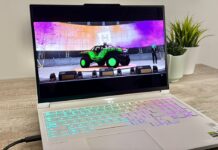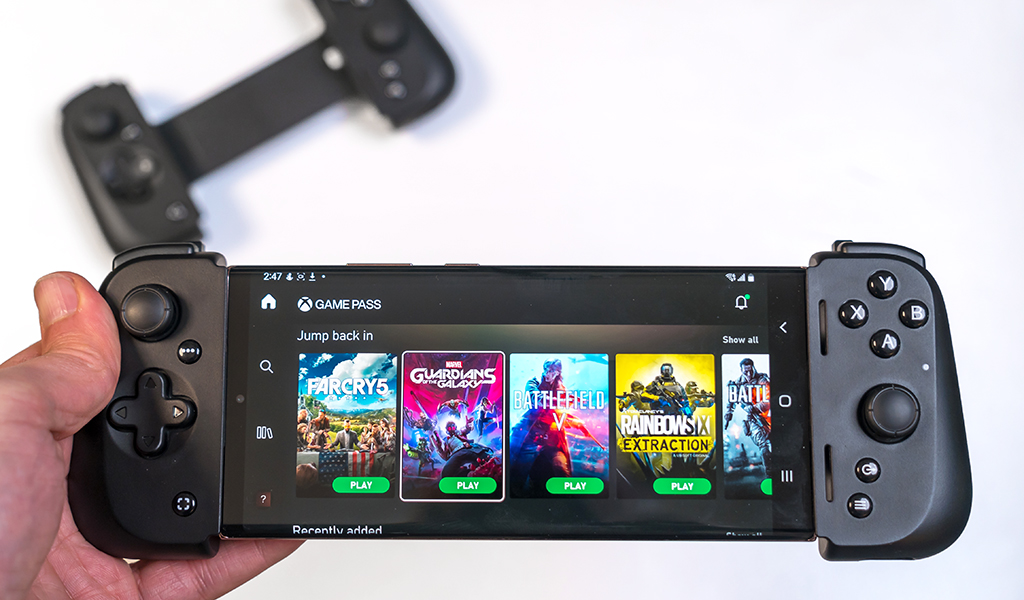
The Razer Kishi V2 turns your iPhone or Android phone into a mobile gaming device capable of playing a wide range of video games. Game controllers for iPhone and Android come in varieties, which is partly why the Kishi V2 stands out among them. Razer’s previous attempts at getting this right met with mixed results, whereas this may be the best mix of intention and execution for the brand.
It’s taken a long time for mobile gaming to hit its stride, though that has more to do with the increasing power phones now wield. Stronger processors and graphics chipsets can handle console games, and this controller really hops along for the ride. If you’re a gamer, or you know someone who is, this could be a fun toy to play with.
Kishi V2 design and setup
Razer designed the Kishi V2 to emulate Xbox controllers based on where the buttons and analog sticks are. It’s a more svelte build than its predecessor was, but the biggest difference is its size. While either end of the controller is slimmer, the two don’t contract to create a smaller footprint. The benefit in doing that is the V2 can fit more phones.
For example, I could never use the Samsung Galaxy Note20 Ultra with the previous Kishi because it wouldn’t expand far enough to fit it. Large phones with reasonably thick cases also proved to be a problem, putting up frustrating roadblocks in what was supposed to be an accommodating product. Those issues largely go away with the V2. The spring loaded mechanism expands further, but there are also removable bumpers underneath to handle phones of various thicknesses. Razer includes two sets in the box for the Android controller to broaden support for phones with or without cases.
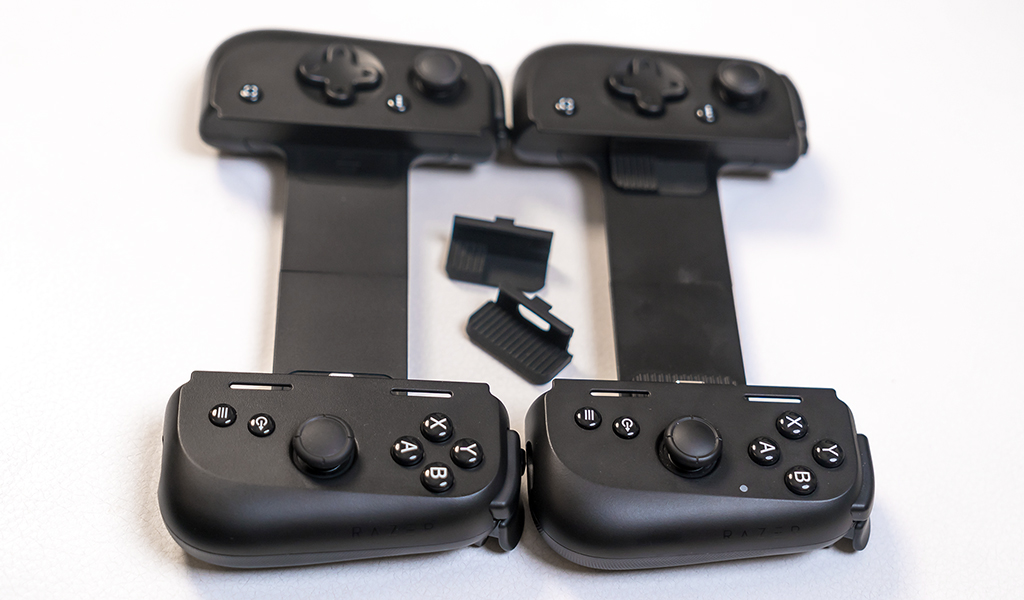
Since modern phones now have bigger camera bumps in the back, this design choice makes a lot more sense, and was just as critical in making this all work. There’s a chance your cased phone won’t fit well, so don’t be surprised if you have to take it out first.
The Kishi V2 doesn’t have its own battery, so all you do is plug your phone into the exposed port, extend the other end and set it to snugly fit the top of the phone. The Android model has a USB-C port, while the iPhone one uses Lightning.
Each one has an additional port underneath corresponding with the other to act as a pass-through. This way, you can charge your phone and play at the same time. One thing I noticed was Razer didn’t improve the pass-through charge rate, meaning if you plug in a fast charger, it won’t necessarily fill up the phone at a faster rate. If anything, charging will be slower, even if you’re not playing at the same time. Maybe not a big deal overall given how easy it is to remove the phone from the controller.
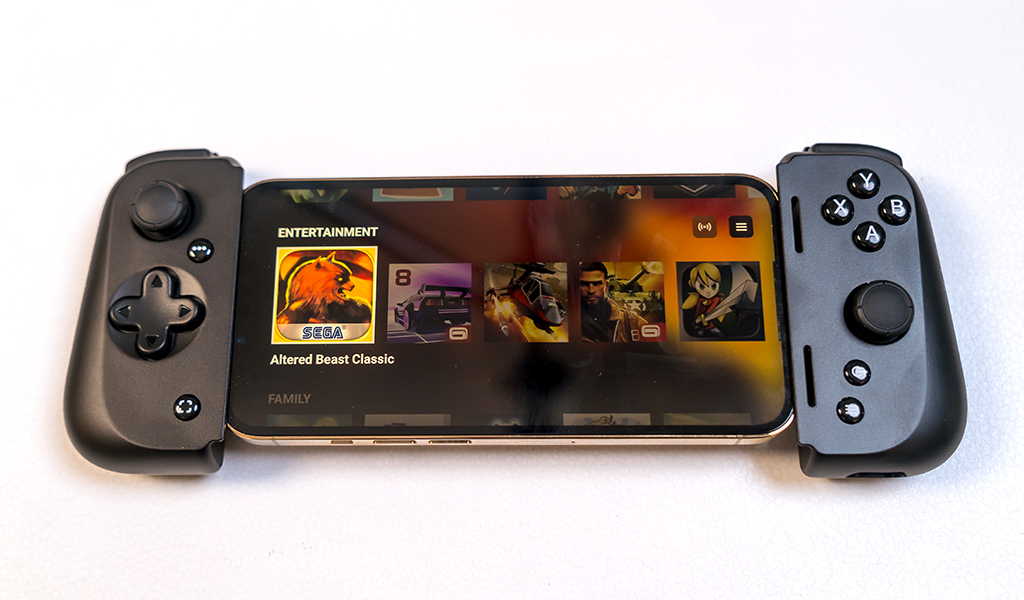
Razer Nexus app
There is a Razer Kishi app on iOS and Android, but that’s not the app to use for the V2. Razer Nexus is the proper one, acting as both a settings modifier and game library. In the latter case, the app presents games that work with the controller. You would need to download them from the App Store or Google Play Store, be they free or paid titles. Razer splits them up into different genres so you know what’s out there, but the list is not exhaustive. There will be unlisted games that can also work with the controller as well, though you may also run into instances where the controls are a little wacky.
One way to get around that is to try a separate app called Mantis Gamepad Pro. It not only automatically recognizes the Kishi V2, it also lets you calibrate and fix input issues. Generally speaking, you won’t need to go there unless the game you’re trying to play doesn’t let you remap the buttons or if they don’t work at all. Many games allow you to adjust the buttons how you want. There are two additional shoulder buttons, both of which you can map in Nexus, but you may find a lot of games won’t use them.
One thing I like about Nexus is that it also acts as a shortcut to game emulators. I have a bunch set up for retro arcade and console games, but I could also add any other games not already on Nexus, too. Razer includes a shortcut button to Nexus directly from the controller as well.
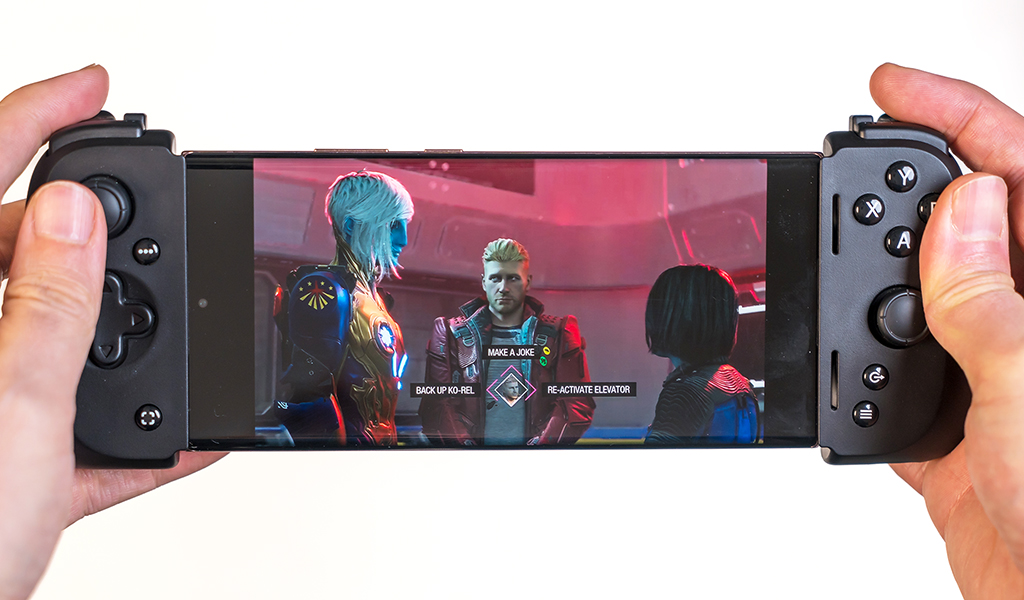
What games to play
Nexus will show you games you can play from the respective app stores, but that’s really just scratching the surface. The Kishi V2 works seamlessly with Xbox Game Pass, the subscription-based service to stream games. I played several games on it with the controller and never ran into any problems with either compatibility or performance. Since the V2 (like its predecessor) is a based on Xbox controllers, it’s a great fit.
Then there are the emulators I mentioned. You probably set things up for yourself if you know all about those. If you don’t, you will find all the information you need about them online. The point is that the controller is capable of playing games from a variety of sources, including those from yesteryear on different platforms.
With the Kishi V2—and the right emulators—I played old arcade games, along with Nintento, Super Nintendo, Sega Genesis, Atari, PlayStation 1, PlayStation 2, and more. This variance in availability effectively turned the phone I was using into a mobile gaming device unlike anything else. This was truer of the Android version than the iPhone one, simply because installing emulators on iPhones isn’t so easy.
I should also note that the Kishi V2 works with Nvidia’s GeForce Now, where it’s possible to play popular titles like Fortnite, Asphalt 9, Counter Strike and others. You will need memberships with other platforms, be it Steam, Epic Games or Ubisoft Connect.
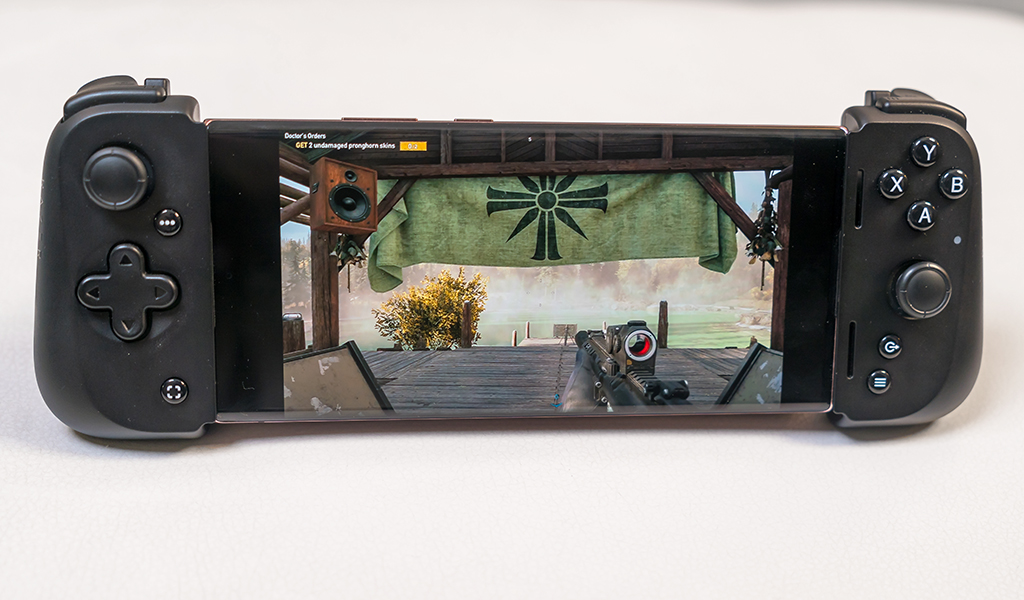
Compatibility over time
The Kishi V2 works with all Android devices running Android 9 or later. That’s not a guarantee that every game will work flawlessly, mind you, because a phone’s components play a key role in how more demanding games perform. Same with your Internet connection if you’re using a steaming service like Game Pass.
For the iPhone, the requirements are more stringent, where you need to run iOS 15.4 or higher to make the controller work with the Nexus app. Could you use the Kishi V2 with an older version of iOS? Yes, absolutely, including with Apple Arcade if you subscribe to that service.
For either Android or iOS, this controller should last a fairly long time, as evidenced by how the original Kishi still works like it always has. The more pressing compatibility is to ensure your phone fits, and if possible, fits with a case on it. Odds aren’t great it will, but if it at least fits snugly without the case, you’ve got the makings of a mobile gaming device the likes of a Nintendo Switch or Steamdeck. Plus, it’s possible to record or stream your gameplay directly from the controller and Nexus app on top of that.
Final thoughts
Gamers are notoriously fickle, so I can see how some may take issue with something on the Kishi V2. Maybe it’s how the buttons feel or the sensitivity of the analog sticks. It could be how it feels or that it lacks a headphone jack pass-through, forcing you to use Bluetooth earbuds or headphones to get audio.
I suspect, however, most won’t feel that way because the controller simply works. Once you get the hang of configuring things where necessary, it will feel pretty natural to use.
The Razer Kishi V2 gaming controller for Android is available now at Best Buy.


